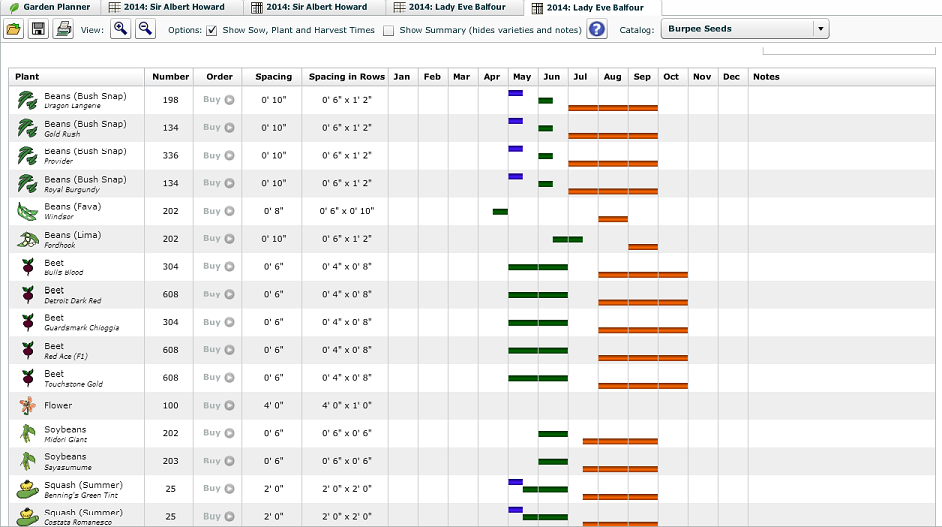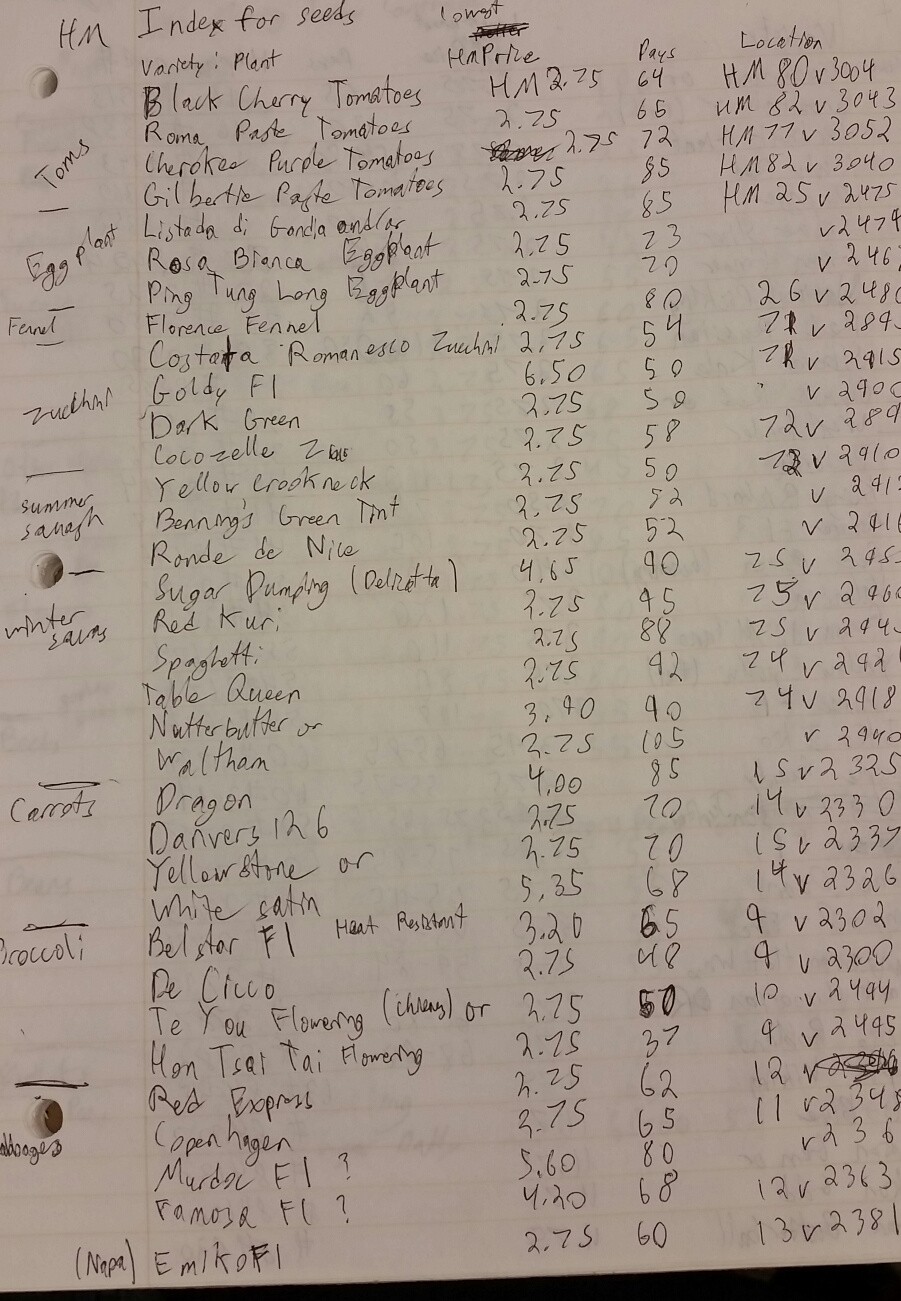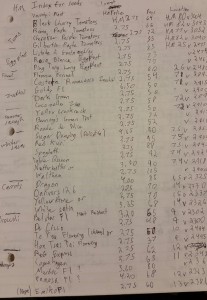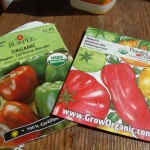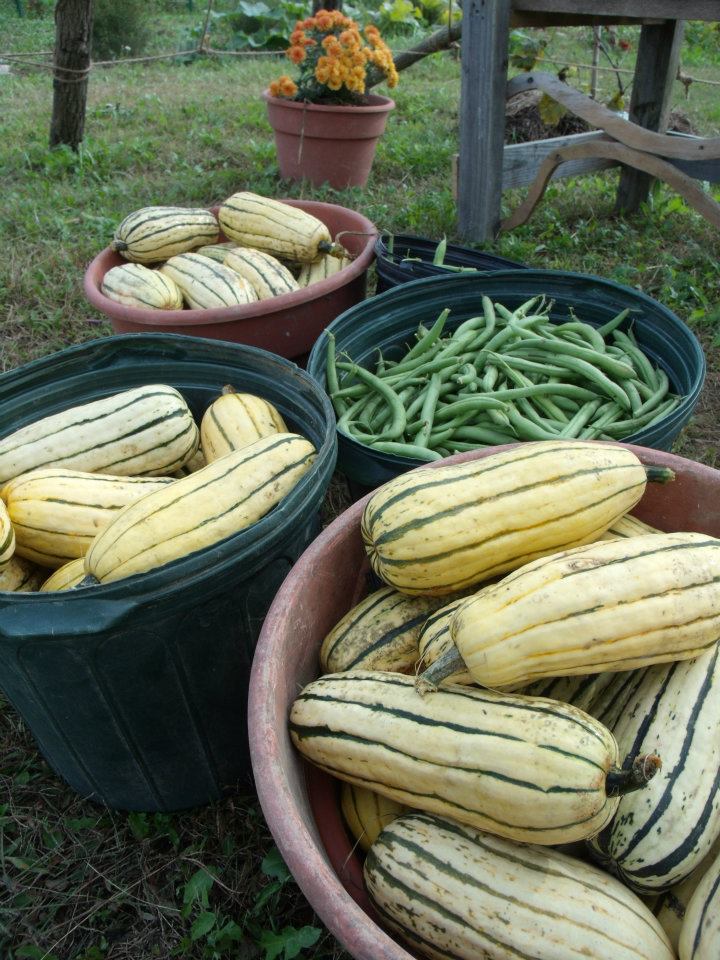So I posted several months ago about choosing seeds and planning fields for the 2015 season. Well, now that the season is finally starting, our plans have come a long way, and it’s funny to think how much has gone into it.
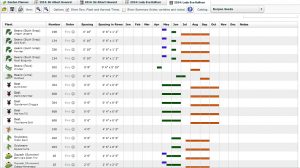
As you place specific varieties of crops onto your Garden Plan in Mother Earth Garden Planner, it generates a sheet with the number of plants; starting, planting and harvesting dates; and more useful data.
After we looked over what crops and varieties we wanted to grow, we had to consider what farm planning software to use to mock up LaFarm. Last year we worked with AgSquared but it wasn’t able to do everything we wanted in the most convenient way, so we switched. First, we were considering the open source Farm Data, being developed by some friends at Dickinson College, but given its relatively rough current state, we chose to go with the Mother Earth Garden Planner. Though the Mother Earth Planner is not actually made for a full sized farm and is more apt for smaller gardens, we were able to fit it to our fields, and the useful visuals as well as the printable data sheets give us the information we’ll need in the field in a good form.
With a rough idea of what we wanted and where, we made a preliminary plan with this software. After that, it was time to narrow down some details. I looked through all our saved seed and made a very extensive inventory with Microsoft Excel that I was able to cross reference with information from our Garden Planner as well as from seed catalogs about growing and pricing.
With that information, I was able to revise our Garden Plan to be much closer to what it will likely look like. This office farming has been happening concurrently with the start of our outdoor work and the purchasing of our earliest crops like leeks, potatoes, and onions, (the last of which we already have in the ground!) The Plan will be indispensable for us in knowing what else we need to get, and keeping track of what goes where and when, and having it now means not having to do extra office work when there’s too much to do outside. Even in cases when we might have to change the plan because of unforeseeable circumstances like weather or a failure in someone’s greenhouse, having a plan already makes recouping from something like that much more manageable.
-Joe Ingrao, Spring 2015 EXCEL Scholar
